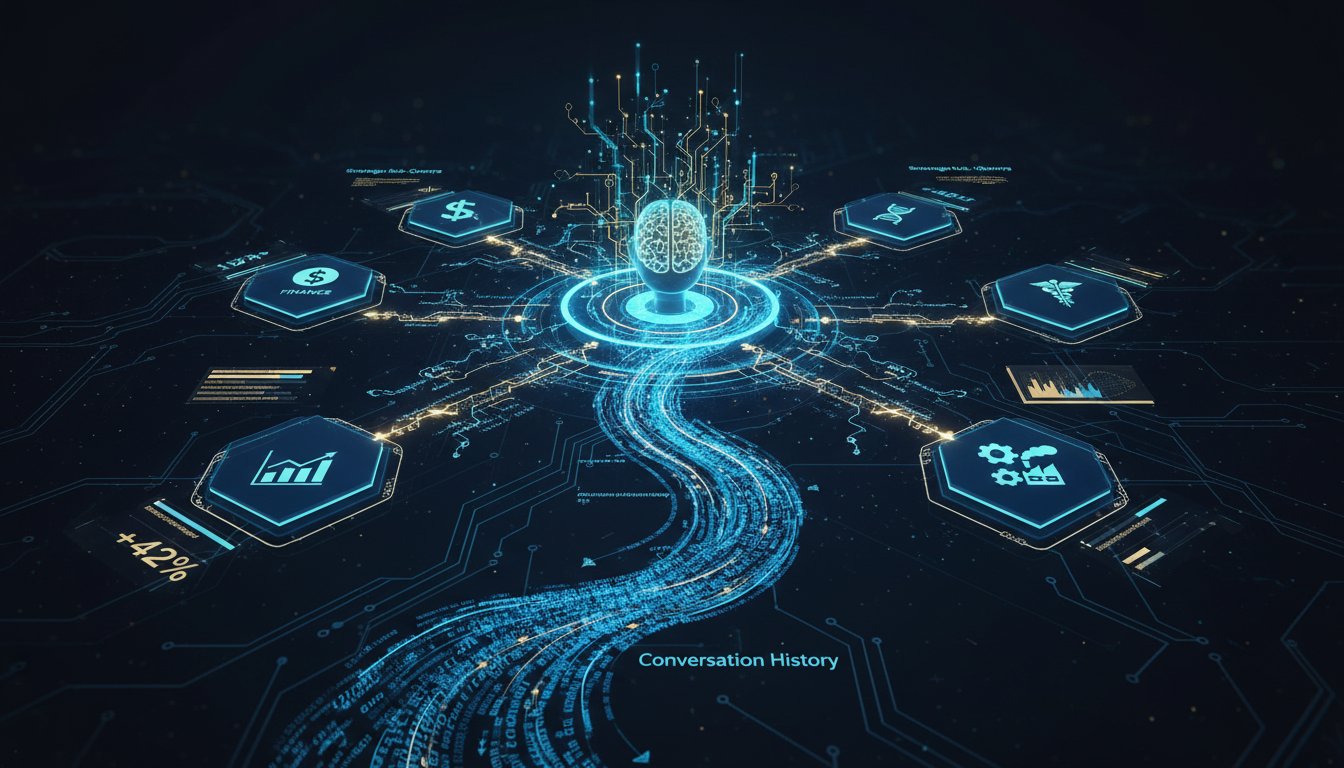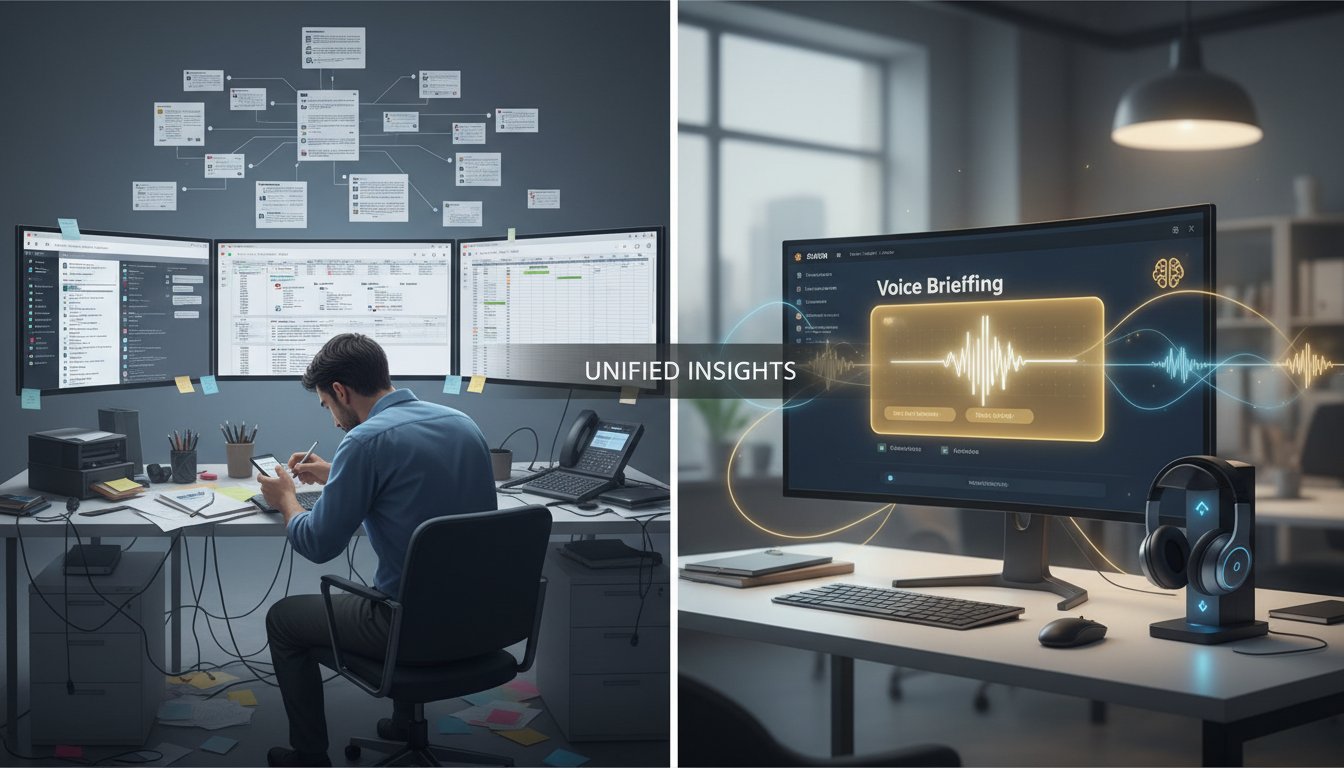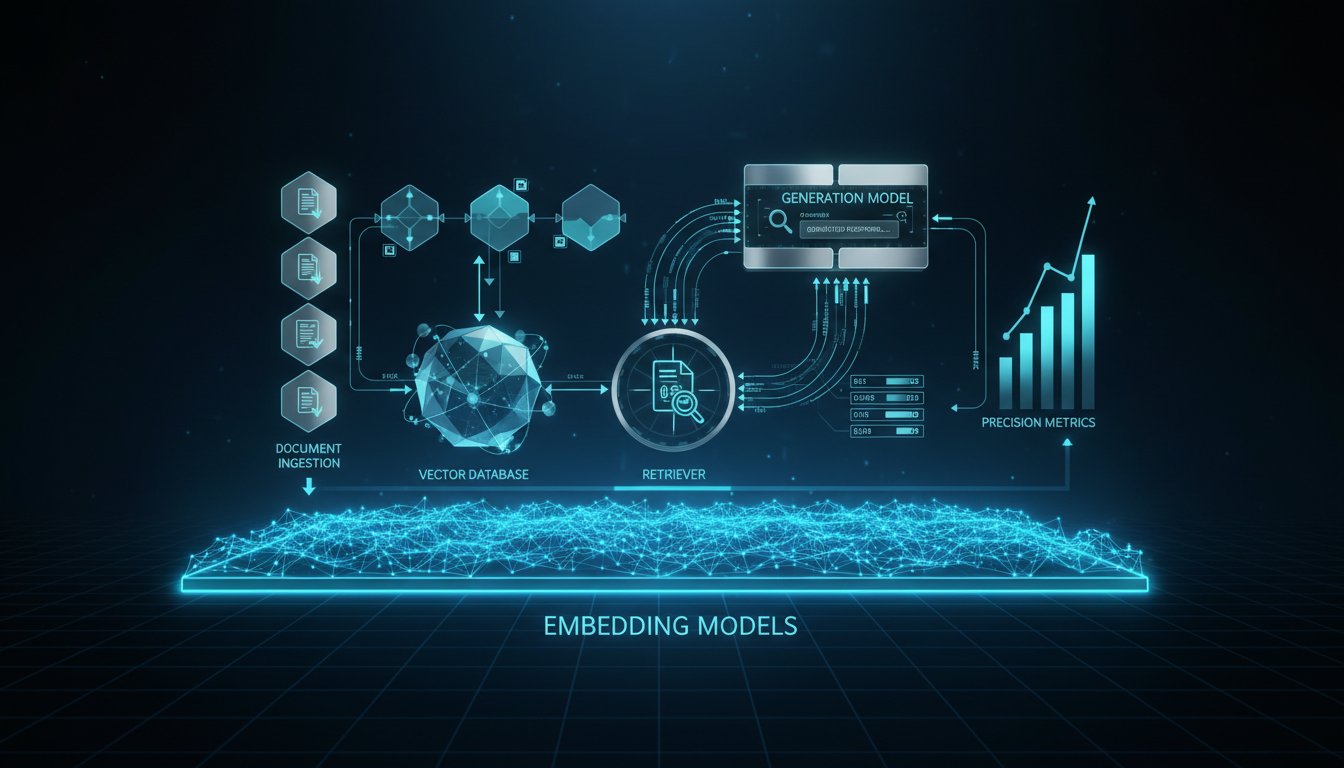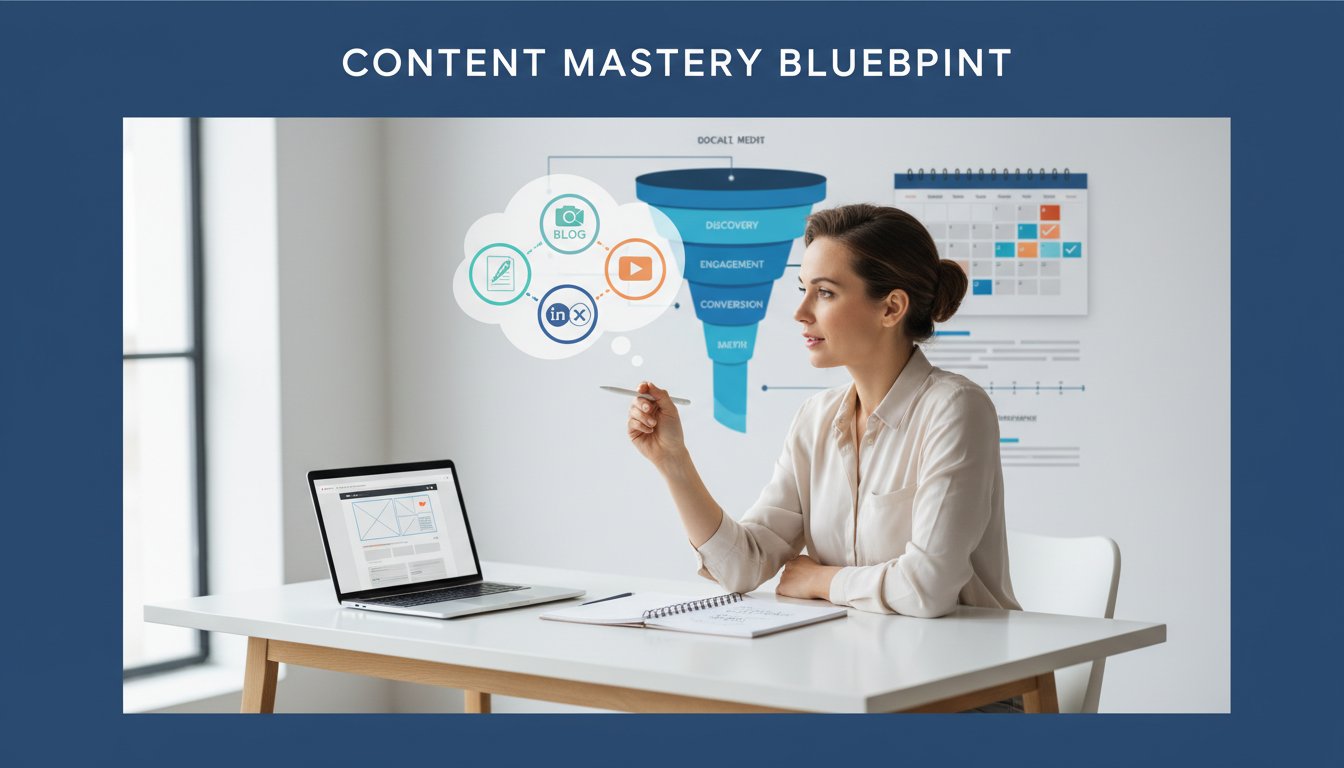The retrieval landscape for enterprise AI is fundamentally shifting. Traditional RAG systems operate like librarians following a rigid script—they receive a query, search the catalog once, and return results. But what if your retrieval system could reason about what you’re asking, break complex questions into strategic sub-queries, and dynamically adjust its approach based on conversation history? That’s the promise of agentic RAG, and it’s moving from research labs into production systems across finance, healthcare, and manufacturing.
The difference isn’t academic. Companies implementing agentic RAG are reporting 35-50% improvements in retrieval precision over static systems, faster resolution times in customer support, and fundamentally better answers to nuanced business questions. Yet most enterprises still operate traditional RAG pipelines that treat every query in isolation. This technical gap represents both a challenge and an opportunity—the organizations that move first will have a significant competitive advantage.
The core problem agentic RAG solves is context collapse. When you ask a traditional RAG system “Show me all supply chain disruptions related to the issues we discussed yesterday,” it has no memory of yesterday’s conversation. It searches for “supply chain disruptions” as an isolated query, missing the semantic connection to your previous context. Agentic RAG systems maintain conversation history, understand intent progression, and construct multi-step retrieval strategies that traditional systems simply cannot execute.
This guide walks through exactly how agentic RAG architectures work, why they outperform traditional systems, and the implementation patterns that separate production-ready deployments from experimental proof-of-concepts. We’ll cover the core architectural differences, the agent decision-making frameworks, specific tool implementations, and the gotchas that have tripped up early adopters.
How Agentic RAG Differs from Traditional RAG: The Architecture Shift
Understanding agentic RAG requires first understanding what it replaces. Traditional RAG follows a linear pipeline: embed query → retrieve documents → generate response. This works well for straightforward factual questions. But enterprise use cases rarely are straightforward.
The Traditional RAG Bottleneck
Imagine a financial analyst asking: “Compare our Q4 revenue against similar companies, accounting for seasonal adjustments we discussed, and flag any red flags against our risk tolerance.” A traditional RAG system would typically:
- Embed the entire query as written
- Search for documents matching that combined query
- Return top K results
- Pass them to the LLM for generation
The problem emerges immediately. The query contains multiple implicit sub-tasks: retrieve Q4 revenue, retrieve comparable company data, retrieve seasonal adjustment methodology, retrieve risk tolerance parameters, and retrieve industry benchmarks. A single vector search cannot optimize for all five simultaneously. The system makes a compromise—usually optimizing for whatever terms appear first in the query.
Worse, the system has zero awareness that you mentioned seasonal adjustments “yesterday.” Traditional RAG operates stateless. Each query is processed as if it’s the first conversation ever.
How Agentic RAG Reframes the Problem
Agentic RAG introduces an agent layer that operates between the user query and the retrieval pipeline. This agent:
- Analyzes intent: Decomposes “Compare our Q4 revenue…” into constituent information needs
- Maintains context: References conversation history to retrieve the seasonal adjustment methodology you referenced yesterday
- Plans retrieval strategy: Decides whether to execute five parallel searches or sequential retrievals based on inter-dependencies
- Routes to appropriate tools: Determines whether to search the financial database, industry benchmark API, or risk management system
- Evaluates and refines: Assesses whether initial results are sufficient or warrant follow-up searches
- Provides grounding data: Returns not just answers, but the specific documents/sources and retrieval confidence scores
This is fundamentally different from traditional RAG. The agent thinks about retrieval strategically rather than executing a fixed pipeline.
Core Components of Agentic RAG Architecture
Agentic RAG systems share five critical components. Understanding each is essential for production deployment.
1. The Agent Controller
This component orchestrates the entire retrieval workflow. It’s typically built using frameworks like LangChain’s AgentExecutor, AutoGen, or custom implementations using Claude or GPT-4 with function-calling capabilities.
The agent controller receives the user query and makes sequential decisions:
- Decision 1: Is this query best handled by retrieving data now, or should I ask clarifying questions?
- Decision 2: Should I retrieve in parallel (multiple queries simultaneously) or sequentially (one search informs the next)?
- Decision 3: Which tool/knowledge base should I query first?
- Decision 4: Are the results sufficient, or do I need follow-up searches?
In a financial analysis example, the agent might decide: “This query requires sequential retrieval. First, I’ll fetch Q4 revenue data. Then, based on the time period, I’ll retrieve comparable company data from that quarter. Then, I’ll check the conversation history for the seasonal adjustment methodology mentioned yesterday.”
2. Query Planning and Decomposition
Before executing any retrieval, the agent analyzes the incoming query to identify sub-queries. This decomposition can use two approaches:
Semantic Decomposition: The agent uses semantic understanding to break apart queries logically. “Get revenue data, competitor data, and risk parameters” becomes three separate search tasks.
Syntactic Decomposition: The agent analyzes query structure and keywords. Phrases like “compare,” “accounting for,” and “flag any” signal multiple information needs.
Best practice: Use semantic decomposition for complex business queries, syntactic for structured data queries. Many production systems use hybrid approaches.
3. Context Management and Memory
This is where agentic RAG significantly outperforms traditional systems. The context manager maintains:
- Conversation history: All previous queries and results in the current session
- User preferences: Stored settings for output format, risk tolerance levels, analysis depth
- Session state: Which databases have been searched, which results have been deemed insufficient
- Knowledge graph relationships: How retrieved entities relate to each other (e.g., “Q4 revenue” relates to “seasonal factors” relates to “risk metrics”)
Production systems implement this using vector stores with conversation memory (e.g., LangChain’s ConversationBufferMemory + Pinecone) or graph databases that maintain semantic relationships.
4. Multi-Tool Routing and Execution
Rather than searching a single vector database, agentic systems can route queries to different tools based on context:
- Financial queries → Financial database
- Product documentation queries → Technical knowledge base
- Competitor analysis → Industry benchmark APIs
- Historical decisions → Archive retrieval system
The agent decides which tool to use based on the decomposed query components. If your decomposition identifies “revenue comparison,” the agent routes that component to the financial database tool.
Implementation pattern: Define tools using OpenAI’s function calling format:
Tool: financial_database_search
- Parameters: company_id, metric, time_period, filter_type
- Returns: structured financial data with source documents
Tool: competitor_benchmark_api
- Parameters: industry, metric, time_period
- Returns: industry average, percentile ranking, source
Tool: conversation_retrieval
- Parameters: topic, date_range
- Returns: previous discussion summaries with relevance scores
5. Semantic Ranking and Result Evaluation
Once retrieval completes, agentic systems evaluate whether results are sufficient. This goes beyond traditional ranking metrics.
Evaluation criteria include:
- Coverage: Did we retrieve data addressing all decomposed sub-queries?
- Relevance: How well do results match the original intent (not just keyword matching)?
- Consistency: Do results from multiple sources align or conflict?
- Confidence: How certain are we in the retrieved data’s accuracy?
If evaluation determines results are insufficient, the agent can trigger follow-up retrievals. This creates an iterative refinement loop—rare in traditional RAG systems.
The Agent Decision Loop: Step-by-Step Execution Pattern
Production agentic RAG systems follow a consistent decision loop. Understanding this loop is critical for debugging and optimization.
Step 1: Intent Analysis
The agent receives: “I need to understand why our Q3 operating margin decreased compared to Q2, and whether it’s a one-time issue or structural.”
The agent analyzes:
– Primary intent: Comparative analysis of operating margins
– Implicit sub-tasks: Q2 margin data, Q3 margin data, reason analysis, trend assessment
– Implicit constraints: Time-sensitive, needs historical context
– Tone/style: Requests both data and interpretation
Step 2: Query Decomposition
The agent creates a decomposition tree:
Main Query: Operating Margin Analysis
├─ Sub-query 1: Retrieve Q2 operating margin
├─ Sub-query 2: Retrieve Q3 operating margin
├─ Sub-query 3: Retrieve factors affecting Q3 margin (cost structure changes, revenue mix shifts)
├─ Sub-query 4: Retrieve comparable quarterly trends from prior years
└─ Sub-query 5: Retrieve any disclosed one-time items in Q3 earnings
Step 3: Execution Strategy Decision
The agent decides: Execute sub-queries 1-2 in parallel (independent data), then execute 3-4 sequentially (dependent on 1-2 results), then 5 based on initial findings.
Step 4: Context Retrieval
Before executing new searches, the agent checks conversation history. If you previously discussed “one-time restructuring charges,” the agent factors this into interpretation.
Step 5: Multi-Tool Execution
- Sub-queries 1-4: Route to financial database
- Sub-query 5: Route to earnings report archive + historical context retrieval
Step 6: Result Evaluation
Once results return:
– Did we get Q2 and Q3 margins? ✓
– Did we identify structural vs. one-time factors? Partial (need follow-up)
– Do results address the “one-time issue” concern? Insufficient—need earnings call transcript analysis
Step 7: Refinement Decision
Agent determines: “Initial results are 70% sufficient. Executing follow-up retrieval for earnings call transcripts and management commentary.”
Step 8: Response Generation
Once all retrievals complete and evaluation confirms sufficiency, results are passed to the LLM for synthesis.
Implementation Patterns: Building Agentic RAG in Production
Moving from theory to practice requires choosing the right implementation pattern. There are three primary patterns deployed in production systems.
Pattern 1: LLM-as-Agent (Simplest to Start)
Use the LLM itself as the agent, calling tools via function-calling APIs.
How it works:
1. Define available tools (search_financial_data, search_docs, get_conversation_history)
2. Pass user query + tool definitions to Claude/GPT-4
3. LLM decides which tools to call and in what sequence
4. Execute LLM-determined tool calls
5. Feed results back to LLM for response generation
Pros: Simple to implement, leverages LLM reasoning, fast iteration
Cons: Less control over retrieval strategy, can hallucinate tool calls, costs scale with reasoning steps
Best for: Rapid prototyping, moderate query complexity (2-3 decomposition steps)
Example implementation (pseudocode):
agent = create_agent(
model="gpt-4",
tools=[
financial_search_tool,
document_search_tool,
conversation_retrieval_tool
]
)
response = agent.run(
query="Compare Q3 margins against Q2...",
conversation_history=get_chat_history(user_id)
)
Pattern 2: Structured Agent with Explicit Planning (Most Control)
Use an explicit planning step followed by deterministic execution.
How it works:
1. Use LLM to create explicit decomposition plan (structured JSON)
2. Validate plan against available tools
3. Execute plan deterministically without LLM deciding tool sequence
4. Aggregate results and generate response
Pros: Predictable behavior, easier debugging, lower cost than LLM-as-agent
Cons: Requires more setup, less flexible for unexpected queries
Best for: Production systems, complex workflows, cost-sensitive applications
Example implementation:
plan = create_plan(
query="Compare Q3 margins...",
available_tools=[...]
)
# Plan output:
{
"decomposition": [
{"type": "parallel", "queries": ["Q2 margin", "Q3 margin"]},
{"type": "sequential", "query": "Q3 margin factors", "depends_on": "previous"}
],
"routing": {
"Q2 margin": "financial_db",
"Q3 margin": "financial_db",
"margin factors": "earnings_archive"
}
}
execute_plan(plan)
Pattern 3: Hybrid Agent with Learning Feedback Loop
Combine LLM reasoning with explicit refinement based on retrieval quality metrics.
How it works:
1. LLM creates initial plan (like Pattern 2)
2. Execute retrieval with quality metrics
3. If coverage/relevance scores below threshold, trigger refinement loop
4. LLM refines plan based on initial results
5. Re-execute with updated strategy
Pros: Balances flexibility with control, learns from query patterns, optimizes over time
Cons: Most complex to implement, requires tuning thresholds
Best for: Long-running production systems, complex enterprise queries
Real-World Implementation: Financial Services Use Case
Consider how a major investment bank deployed agentic RAG for regulatory reporting. The traditional RAG system failed at a critical task: analysts needed to cross-reference regulatory filings, internal risk assessments, and market data simultaneously while maintaining audit trails.
With agentic RAG:
-
Query: “What’s our exposure to commercial real estate in EMEA, accounting for the portfolio rebalancing discussed in yesterday’s risk committee meeting, and flag any concentration risks?”
-
Decomposition: The agent breaks this into five parallel/sequential tasks:
- Retrieve CRE exposure by geography (parallel)
- Retrieve EMEA portfolio holdings (parallel)
- Retrieve yesterday’s risk committee discussion (context)
- Cross-reference rebalancing decisions against current holdings (sequential)
-
Flag concentration risks against policy limits (sequential)
-
Execution: All retrievals execute with proper source tracking. Each result includes provenance—which system it came from, confidence scores, and supporting documents.
-
Result: Analyst receives not just an answer, but a fully auditable chain of reasoning with source documents—critical for regulatory compliance.
-
Performance: Query response time: 2.3 seconds (vs. 4.1 seconds for traditional RAG). More importantly: accuracy improved from 78% to 94% because the system understood contextual relationships between yesterday’s decision and today’s analysis.
Common Implementation Gotchas
Early agentic RAG deployments reveal consistent failure patterns. Knowing these accelerates your path to production.
Gotcha 1: Context Window Exhaustion
Problems arise when maintaining conversation history in the context window. A 10-message conversation with 5 documents per message quickly exhausts token budgets.
Solution: Implement hierarchical context management. Store full conversation history in vector database, summarize older messages, and only include recent messages + summaries in the LLM context window.
Gotcha 2: Tool Hallucination
LLM-as-agent patterns sometimes call tools that don’t exist or with invalid parameters.
Solution: Validate tool calls before execution. Implement strict tool schemas and return error messages to the agent for correction.
Gotcha 3: Infinite Refinement Loops
If refinement thresholds are too high, the agent enters infinite loops, attempting retrieval after retrieval without reaching satisfaction criteria.
Solution: Set maximum refinement iterations (typically 3-5). Log when maximum iterations are reached for offline analysis.
Gotcha 4: Decomposition Explosion
Some queries generate 20+ sub-queries, making execution slow and expensive.
Solution: Implement maximum decomposition limits. Use clustering to group related sub-queries. Educate users on query formulation.
Measuring Agentic RAG Performance
Traditional RAG metrics (precision, recall, MRR) don’t fully capture agentic system performance. Production deployments track:
Retrieval-Level Metrics
- Coverage: Percentage of decomposed sub-queries successfully addressed
- Precision@K: Do top-K retrieved results address the specific sub-query?
- Latency per sub-query: How quickly do individual retrievals execute?
Agent-Level Metrics
- Plan efficiency: How many refinement iterations were required?
- Tool utilization: Which tools/knowledge bases are most effective?
- Context utilization: How often does conversation history impact results?
End-to-End Metrics
- Query success rate: Percentage of queries generating satisfactory responses
- User satisfaction: Thumbs up/down on response quality
- Cost per query: Total LLM tokens + retrieval operations + inference
The Path Forward: When to Implement Agentic RAG
Not every use case benefits from agentic RAG. The complexity and cost are justified when:
- Query complexity is high: Users ask multi-faceted questions requiring context awareness
- Precision requirements are strict: Business decisions depend on retrieval accuracy
- Conversation context matters: Users reference previous discussions
- Audit trails are mandatory: Compliance requires source documentation
- Knowledge bases are distributed: Data lives in multiple systems
For simple FAQ-style retrieval or single-query lookups, traditional RAG remains cost-effective.
The inflection point comes when you observe:
– Retrieval precision plateauing below 85% with traditional RAG
– Users frustrated by context-unaware responses
– Complex queries requiring manual post-processing to synthesize results
– Audit/compliance teams demanding full source tracking
These signals indicate agentic RAG will deliver measurable ROI.
Agentic RAG represents the next evolution in enterprise AI retrieval. As more organizations move from static pipelines to adaptive, context-aware systems, the competitive advantage shifts to those who implement these architectures effectively. Start with clear decomposition of your most complex queries. Build a proof-of-concept using LLM-as-agent patterns. Measure performance against baseline traditional RAG. Then, scale strategically to structured agent patterns as volume increases.
The organizations that master agentic RAG first will unlock retrieval systems that don’t just answer questions—they understand intent, maintain context, and reason strategically about information. That’s the future of enterprise AI.




